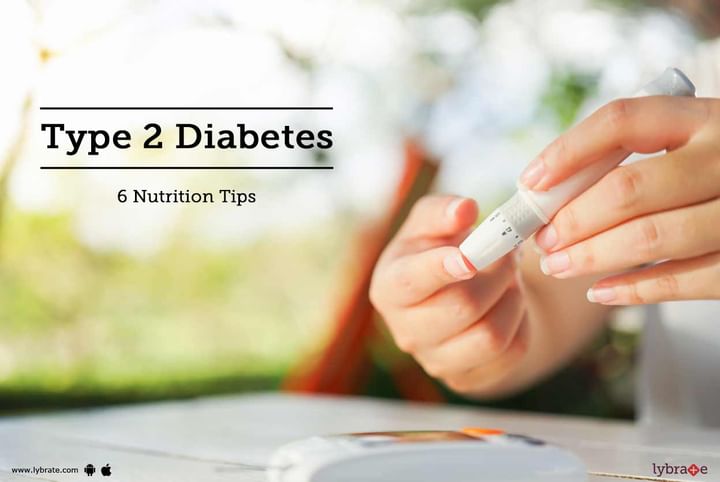Type 2 Diabetes - 6 Nutrition Tips
Type 2 diabetes is a form of diabetes in which the body does not use insulin properly and develops resistance to insulin.
A patient with type 2 diabetes must make several changes to his/her regular diet and food patterns. The aim is to manage the blood-sugar level of the body. Hence, a type 2 diabetes patients should follow a regular diet, which comprises of:
-
All types of foods from different food groups.
-
Lesser calories.
-
Lessened and limited intake of carbohydrates.
-
Healthy fats.
Here is a list of food items you should include in your diet in case you have type 2 diabetes.
-
Vegetables: You must have fresh or frozen vegetables and avoid using sauces, dips, fats or salts. Intake non-starchy vegetables like cucumber, spinach, broccoli, cabbage, lettuce and vegetables, which are dark green or yellow in color. Also have starchy vegetables such as corn, green peas, beans, carrots and yams. Avoid potatoes as they are pure starch.
-
Fresh Fruits: You should include fresh fruits in your regular diet. Have apples, bananas, berries, papaya, cherries, grapes, melons, oranges, peaches, pineapples and raisins. Have whole fruits regularly, which do not contain added chemical sweeteners.
-
Grains: Include grains in your diet and consume whole grains more. Whole grains are not processed and consist of the whole-grain kernel. Grains contain starch, which is a source of carbohydrates. Carbohydrates are bad for blood sugar. Hence, whole grains, which are rich in fiber are recommended. Fiber controls the blood-sugar level from shooting up. Fiber should be included in the form of bran of oat and wheat.
-
Proteins: Coming to protein food items, you should consume fish and poultry items often. Always remove the skin from chicken or turkey properly before cooking. Buy lean meat and trim all the fat from meat. Avoid frying and use methods such as baking, roasting, grilling or boiling. Also use healthy oils for frying purpose.
-
Dairy Products: In case of type 2 diabetes, always use dairy products, which are low in fat. Do not add sugar to milk, curd or yoghurt as they contain natural sugar. Do not consume more than three cups of milk a day.
-
Oils and Fats: Cut down the intake of excessive oily and fatty foods. Avoid food items that contain high saturated fats such as bacon, hams, sausages and butter. Consume food with polyunsaturated or monounsaturated fats. Oil raises blood-sugar level and is high in calorie and should be used in lesser amounts.
A type 2 diabetes patient needs to undergo several changes in his/her diet to keep a check on the rising blood sugar levels and for living as healthy as possible. If you wish to discuss about any specific problem, you can consult a Dietitian/Nutritionist.



+1.svg)
